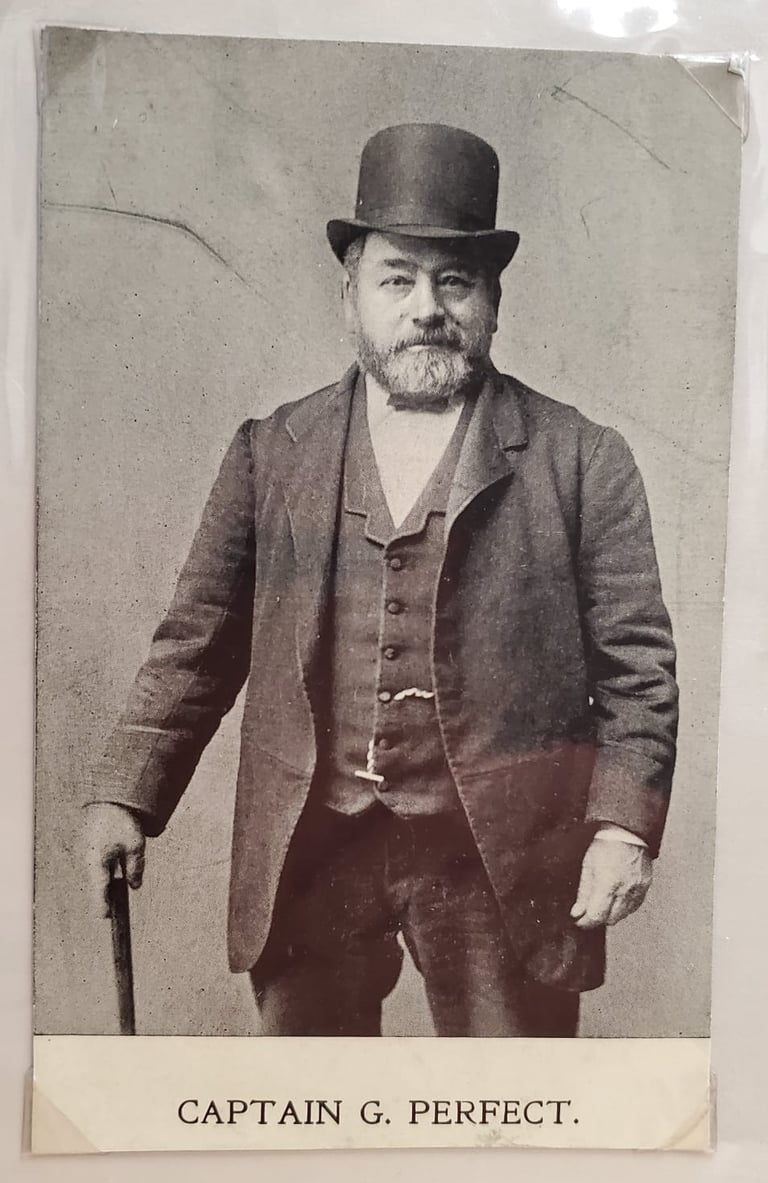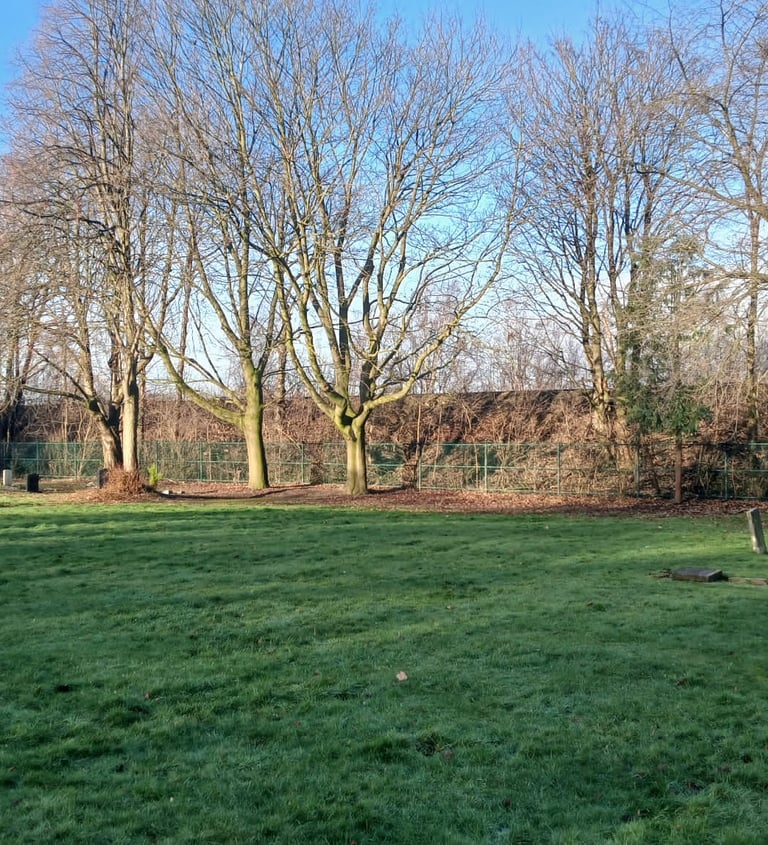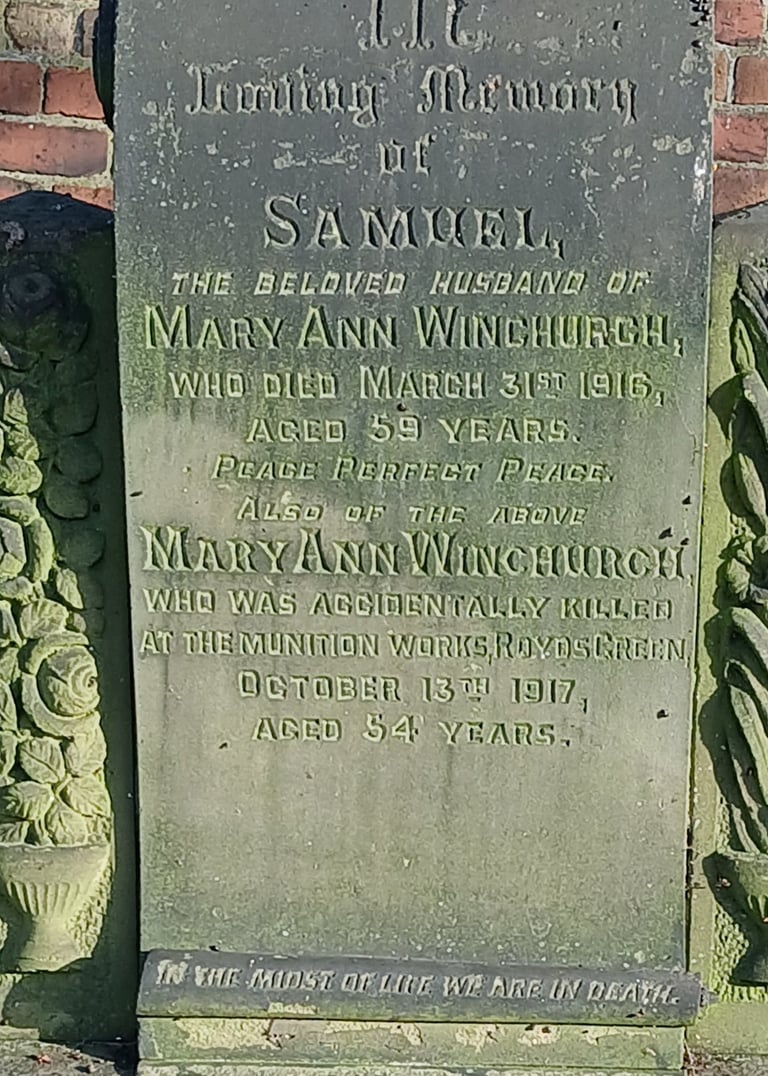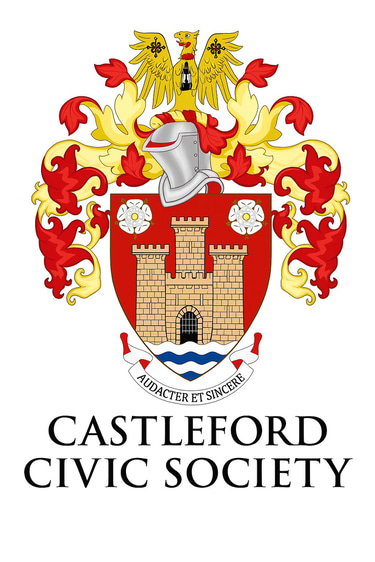Extended Biographies


BIOGRAPHICAL INFORMATION: REV THOMAS WILLIAM BLANSHARD
Thomas William Blanshard was born in 1834 and baptised on 2 January 1835 at Terrington, North Yorkshire. By 1851, at 16 years old, he lived in Easingwold as a domestic servant to a chemist, then in 1859 he was ordained as a Wesleyan minister. In 1860, the Wesleyan Missionary Society sent him to Sierra Leone and he was there for three-and-a-half years. He married Elizabeth Cundall in 1864, at Easingwold, and had at least eight children, three of them being commemorated on his headstone, with his two named sons, Robert Shepherd Blanshard and Edmund Cundall Blanshard, also being buried here with him. Rev Blanshard was the author of the Life of Samuel Bradburn published in 1870; Bradburn was a Methodist preacher and an associate of John Wesley.
Upon his return from Sierra Leone, Rev Blanshard served as minister at the following places before his posting to Castleford in 1875: Stokesley, North Yorkshire; Bedale, North Yorkshire; Leith, near Edinburgh; Shotley Bridge, County Durham; and Otley, West Yorkshire. The ‘headquarters’ chapel of the Castleford Wesleyan circuit was on Carlton Street and was opened in 1859: it served for exactly a century until it was demolished and replaced by shops (the block incorporating the former G T Smith, later Co-Op, supermarket).
Christiana Leith Blanshard, the third daughter of Thomas Blanshard and his wife Elizabeth, was born on 10 November 1868 at Leith and she died, aged just two, at Shotley Bridge. Robert Shepherd Blanshard, their eldest son, was also born in Leith, on 26 August 1866, and was nine when he died at Castleford. The baptism of Edmund Cundall Blanshard occurred on 5 October 1870, at Shotley Bridge; he died at Castleford on 25 January 1882, aged 11.
Elizabeth Blanshard lived out the rest of her life in Castleford and died on 22 January 1913 at 8 Middle Oxford Street, aged 77. Daughter Mary Elizabeth Flowett, nee Blanshard, died on 6 June 1931 Stretford, Lancashire. They are buried in the same grave at Castleford Cemetery. Mary Elizabeth was married to John William Flowett, a glass bottle merchant, who died in 1936 in hospital at Manchester and is commemorated on his parents Robert and Mary’s headstone in Castleford Cemetery.
Researched and written by Helga Fox.


BIOGRAPHICAL INFORMATION: CAPTAIN GEORGE PERFECT
EARLY YEARS
George Perfect was born on 27 June 1829, at Castleford, into a seafaring family. He was baptised a month later. His grandfather and namesake, George Perfect, was a ship’s joiner who originally hailed from Pontefract, though it was his father John, described as a ‘vessel owner’ in his probate, who first took him to sea. His mother, Sarah, kept house and raised the children (seven boys and a girl) with the help of a domestic servant until George and four of his surviving younger brothers, John, Jabez, Benjamin and Joseph were old enough to leave for sea.
On the 1841 census, the family were at Gregory’s Row. On the 1861 census his mother and his sister Harriett were on Carlton Street. The youngest brother, Thomas, born 1848, died in 1853 aged five.
ADULTHOOD
George married Ann Brough, the daughter of a local butcher, on 23 May 1855, at All Saints parish church, Castleford. She led the life of a mariner’s wife and had no children of her own, although Ann’s niece, Minnie Wright, lived with them from 1881, aged 10, until she got married at the age of 31 in 1902.
A copy of his Mate’s Claim for Certificate of Service, dated 21 December 1858, states that from 1840, at the age of 11, George was employed as a Boy for four years on a vessel named Ebenezer, out of Goole. He remained with the same vessel for a further eight years, progressing to Seaman in 1846 and to Mate in 1848, aged 19. In 1852 he become Mate on a vessel named Mary and by 1854 he had become Master of another vessel named Sinai, a post he held until 1858.
His claim for 18 years of service in the British Merchant Service (BMS), Coasting Trades, was approved on January 3 1859. His role in the BMS would have involved the transportation of goods and people between ports along the coast and rivers of Britain.
George’s grandad, George, died in 1861.
On Saturday 21 May 1864, the Leeds Intelligencer newspaper reported the launch of a large schooner at Castleford, built for George by the shipyard of Richard Cliff and named Miranda, as follows:
Launch of a Schooner at Castleford.
Whit-Tuesday will be a long remembered day in Castleford. The beautiful weather caused many hundreds to flock into the town from the neighbouring villages, not only to see the annual gathering of the Sunday schools but also the launching of the schooner from the shipyard of Mr. Richd. Cliff. Owing to the facilities given by the Aire and Calder Navigation Company, by widening and lengthening their locks between Goole and Castleford, large craft can now be built at this place. The first of this class of vessels was launched on Tuesday. She measures 84 feet over all by 18 feet 8 inches in breadth of beam, and 170 tons burden, and classed A1 for 12 years at Lloyds. She has a painted stern and a carved figure head, representing Miranda, by which name she was duly christened, and is intended for the coast and continental trade and built for Mr George Perfect. The launch took place about three p.m., and was witnessed by upwards of 1,000 Sunday school children, as well as a vast assemblage of the inhabitants of Castleford and neighbourhood.
George lost his father, John, on 4 July 1869. George and his brother-in-law, Job Harling, were his father’s executors, whilst his mother appears on the 1871 census living in Carlton Street, widowed, aged 67. Harriet, born 1843, married Job Harling in 1865 and is also living on Carlton Street in the 1871 census.
On 7 January 1880, George gave a recitation entitled The Spanish Armada as part of an entertainment event at the Mechanics Hall in Castleford, aimed at raising money for the the Soup Kitchen Fund. He was also named as a source for tickets and referred to as an Overseer. George was well known as a vigorous Wesleyan preacher in his day. On the 1881 census entry, when he was residing at 20 Carlton Street, he describes himself as a ship owner and local Methodist preacher.
On the 1891 census, he was residing at 89 Beancroft Road, Castleford, a mid-terrace villa built in 1886. On 18 March 1891, the Southern Echo named both Captain George Perfect and his brother Captain Jabez Perfect as the brothers of a deceased ‘Captain Perfect’, of the schooner Hyperion, of Goole. This refers to their brother Joseph, whose coffin they accompanied from Yarmouth Pier on the Isle of Wight, on the steamer Solent, heading for Lymington, near Southampton, where they proceeded by rail to Castleford, for burial in Castleford Cemetery.
Over his later years he can be found preaching at many venues, as demonstrated in this note from the Yorkshire Evening Post of 31 May 1893:
Captain George Perfect, a member of Castleford Local Board, is this week at Epsom Races attached to the mission of the Reverend Hugh Price Hughes, M. A.
George, still residing at 89 Beancroft Road, died on 19 January 1908, with his widow, Ann, and niece, Minnie as executors. Ann died just a few months later on 31 May, following which Minnie moved into 89 Beancroft Road with her husband, Thomas Walker.
Researched and written by Helen Wilby.


BIOGRAPHICAL INFORMATION: CHARLES SANITER
EARLY YEARS
Ludwig Carl Saniter was born in Denmark around 1830. As he came of age, the country was experiencing a period of mass emigration and he was among many young men who left for foreign lands. He arrived in the Port of London from Hamburg on 14 March 1851, describing his profession as merchant. He appears on the 1851 census residing in Lambeth before making his way north, where he eventually married Jane Elizabeth Best, a native of Newcastle, in 1858.
Their family began to grow and Charles John Hermann Saniter was born in Middlesbrough in 1864, before they settled in Redcar where he would attend the Sir William Turner Grammar School, Coatham, matriculating in June 1882. He was awarded a BA from the University of London in 1887, through private study at the Crossley School, Halifax.
Charles was the middle son of three brothers, all of whom attended the Grammar School at Coatham with great success. Speech day reports in the local press reveal that he was a prominent participant in proceedings both acting and reciting a number of scenes from classical sources, for example a scene from l’Avocat Patelin, an early 18th century French comedy, and a scene from Adelphi by Terence, a Roman playwright. He also features several times among the prize winners, notably in mathematics and Greek. In 1879, the Cambridge examiner attending at Coatham remarked: “In the Sixth Form a keen contest for the first-place leaves Jones at the head of the school with C. Saniter very close upon him.”
In the late 19th century, the University of London allowed students to study privately and take examinations without attending London, which was a pioneering move in long-distance learning. It was the first to give external students the opportunity to continue to earn a living while studying. Charles’s university records show that he was working at the Crossley School, Halifax, during his private study years. This school developed out of an orphanage founded by the Crossley family of Dean Clough Mills, where over 200 children from all over the country received a home and an education.
ADULTHOOD
We first find mention of Charles Saniter’s teaching career in Castleford through an announcement in the Pontefract & Castleford Express in August 1901.
Castleford. THE GRAMMAR SCHOOl, Bank Street. Next term will commence Mon Sept 16th - For prospectus apply to the Head Master CH. J. SANITER, B. A. (Lond.).
This was a small private school among several in the town which predate the 1902 Education Act. During this time, Saniter appears on the 1904, 1905 and 1906 Electoral Registers residing at Smawthorne Lane, with the qualifying property being a school on Commercial Street.
The following is from a personal recollection of the early days of Castleford Grammar School by T R ‘Toddy’ Dawes.
Toddy Dawes learned of his appointment as head of Castleford Grammar School in July 1906. He was informed that the temporary building in which it was proposed to open the school was in the course of erection, this being a hut in Wheldon Lane. The first meeting of the Governors had taken place in March earlier that year, with the great miners’ leader, Herbert Smith, representing the West Riding County Council.
The little opening ceremony took place on September 13th, 1906, with hymns specially printed on cards, which were used for years at the end of term. There were 115 pupils on the first day and six other members of staff including C. J. H. Saniter, (appointed to teach French and become the school's Second Master responsible for the discipline of the boys).
Mr Dawes was a man of with revolutionary academic ideas, seeking to form close associations between school and town and establish a tradition of dramatic performances, European links, cultural events and liberal self-expression. It is presumed that Saniter was able to add much to this agenda, being half Danish and with a love of stage activities developed in his own schooldays in Redcar. In the school’s half centenary book, he is recorded as being first Housemaster of Red House, “following his house teams’ fortunes with great enthusiasm, a familiar figure on Wednesday afternoons, urging his team on from his armchair on the touchline … His personal hobby was said to be model aeroplanes, and he led among the boys, a model aeroplane club, which would make excursions into the countryside to try out newly constructed models.”
An article in the Pontefract & Castleford Express on 22 December 1911 reports on the Fifth Annual Concert of the Castleford Secondary School, taking place in the large assembly hall. All the scenery and stage properties had been designed, made and painted at the school. Here we find reference to a young H S Moore as an executioner in a piece based on Thackray’s The Rose and the Ring, followed by a new play by local playwrights, entitled Legiolium, in which the second scene was dramatised by Form II Upper under the direction of Mr Saniter.
The 1911 Census shows Charles residing at 47 Healdfield Road, directly opposite the school gates, and this was still his address when he passed away at the relatively young age of 49 on March 4 1914.
Researched and written by Helen Wilby.


BIOGRAPHICAL INFORMATION: ARTHUR SPEIGHT
On 4 August 1932, Arthur Speight collapsed and died in the small market place at the side of Castleford Library, on Carlton Street, following a riot by members of the Communist Party of Great Britain (CPGB) outside the former Urban District Council offices on Sagar Street. The root cause of the disturbance was controversy over the much-hated means test. The government had introduced the means test in November 1931 in order to save money at a time when unemployment was extremely high owing to the worldwide Great Depression. The test was a way of determining eligibility for unemployment benefit but, rather than being based on the qualification of the individual claimant, it was assessed on the income of their entire household. If the household was considered to have an adequate income, the individual’s benefits were stopped. Not only were households consequently worse off, it also caused problems within families. Miners and bottle makers were amongst those hardest hit in Castleford. Poverty, malnutrition and homelessness increased.
The Castleford Trade and Labour Council, which was meeting at the Sagar Street offices to discuss its opposition to the means test, refused entry to a deputation from the local Communist party. By the time the meeting ended, around 500 communists and supporters had assembled, singing revolutionary songs before booing and jeering council members as they left. Councillor Arthur Pickersgill, the chairman of the meeting and the last to leave, was confronted by a large crowd incited by John William Malkin, a member of the urban district council. One of the crowd, Samson Barrett, struck Pickersgill with a walking stick, at which point police became involved in the affray. They arrested Barrett and Malkin, as well as fellow party members Edward Humble, Samuel Allington, Frederick Wall and James Lamb, all of whom were later convicted of assault.
Clarence Ernest Mason, proprietor and editor of CPGB newspaper the Daily Worker, reported in his publication on various days during August that Arthur was a victim of violence by police. An inquest held into the death of Arthur Speight found he died from a heart condition. Witnesses testified Arthur was not party to the mob but was in a crowd of observers at the top of Sagar Street. He collapsed after hurrying away. The accusations led to a libel charge by the West Riding County Constabulary against Mason and the printers, Utopia Press Ltd. Clarence pleaded guilty and was sentenced to six months’ hard labour with fines, while the printers were fined £500. Both had to pay the court costs.
Arthur Speight, who is buried in an unmarked grave in Castleford Cemetery, was born in 1873, in Glasshoughton, to James and Elizabeth Speight. James had married Elizabeth Ellis in 1860. James, a miner, was born in Norton, South Yorkshire to William Speight, a farmer of Askern, and his wife Martha, nee Wilby. James is a classic example of the many people who moved from working on the land into the growing industries of the 19th century.
Arthur had several brushes with the law during his life, being imprisoned and fined. He lived at 12 Sykes Street with a married woman for at least ten years before they married. Arthur was unemployed in 1921, having previously worked for Airedale Collieries Ltd at Fryston colliery. This was the year when the pits returned to private ownership after the First World War. A slump in demand and a flood of coal from Germany caused the British mining industry severe problems: colliery owners wanted to increase working hours and reduce wages, which led to strikes and lockouts.
Arthur and Mary V Pickles married in 1931 after the death of her husband at Rotherham. Mary married for a third time in 1936 to Neil Halligan, an Irishman who died the following year. Mary appears on the 1939 register as being “incapacitated blind”.
A pamphlet produced by the City of Sheffield Education Committee contains Butch Speight, a song loosely based on the story of Arthur.
Researched and written by Helga Fox.


BIOGRAPHICAL INFORMATION: MARY ANN WINCHURCH
Mary Ann Sykes, born in 1859 in Whitwood, was the daughter of Christopher Sykes, a glassblower, and Eliza Appleyard, who had married in early 1859 at All Saint’s Church, Featherstone. At that time, Whitwood was part of the extensive parish of Featherstone (the village now referred to as North Featherstone, as the later coal mining community we now know as Featherstone had yet to be built).
Three years earlier, Samuel Winchurch was born at Bilston, Staffordshire. His father, John, was one of the many that moved from the ‘Black Country’ to find work in the local collieries. In 1871, the Winchurch family were living at Victoria Terrace, Whitwood, and Samuel is listed in the census as a “wetter off at glass works”. A wetter off was someone who broke off the excess glass from the neck of a bottle. In 1875, his father, who was a widower by 1871, married a widow by the name of Martha Cork, nee Rhodes.
Samuel married Mary Ann Sykes in 1877. Later that same year, his father got into trouble with the law for refusing to leave the Lord Raglan Inn on Methley Road, Castleford, and smashing a pane of glass. Samuel’s punishment was a fine of £1 3s, which in today’s value is about £150.
Samuel and Mary Ann had 12 children, nine girls and three boys. Sadly, three of their children died in infancy: John William, their eldest son, was just one year old when he died in 1881; Jessica, born in 1900, died in late 1901; and their youngest child, Hannah, died at five days old in 1903. They were buried at All Saint’s Parish Church, Hightown and Whitwood Mere, most likely in the former cemetery off Rhodes Street which was levelled in the 1960s. At some time before 1911, they had adopted a girl by the name of Hilda Woodward, aged five in that year’s census.
Samuel, who had also previously been a coal miner, was by 1913 a manager of brickworks. In 1901, at least three of Samuel and Mary Ann’s daughters worked in a bottle factory while the family lived in Whitwood. Their daughter Elsie was a forewoman in a glass bottle factory when the family lived in Castleford in 1911. The Winchurch family lived at 135 Savile Road, a property owned by Frederick Thomas Hunt, a chemical manufacturer of Messrs Hunt Bros at the Aire and Calder Chemical Works on Cinder Lane.
There are many unanswered questions about the circumstances surrounding the death of Mary Ann. Was she working at the Rothwell munition works because she had to seek employment after Samuel’s death in 1916, or was she already working there before Samuel died? The Winchurch headstone tells us she died in an accident at Royds Green munitions factory, but what happened?
No specific munitions works around the country are identifiable in newspaper articles. Reports only vaguely referenced accidents and deaths, failing to name the deceased workers. There are very few mentions of accidents as such in newspapers: they only report, for example, that “an accident at a munition works in the North.” had happened. This was to keep up morale and hide exactly how many were being killed at each factory. This would have also been to hide (as much as possible) where munitions works were located.
Many men from Rothwell had enlisted, leaving women to fill the gap in many industries. There was a high demand for shells in 1915, which were needed by the troops at the front, so the workers were under constant pressure to work faster. From 1915, factories became regulated by the Ministry of Munitions because of the shell shortage. The munitions women were also working with poisonous trinitrotoluene, otherwise known as TNT. This chemical caused the women’s skin to turn an orange-yellow after constant exposure, hence the nickname “Canary Girls.” The women’s hours were long and their wages were very low. Women’s wages were half of what a man would earn at the same job. Woman’s suffrage members were demanding equal pay in the workplace from at least 1830 and were still fighting the battle, from 1866, of demanding the right to vote.
Researched and written by Helga Fox.
